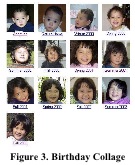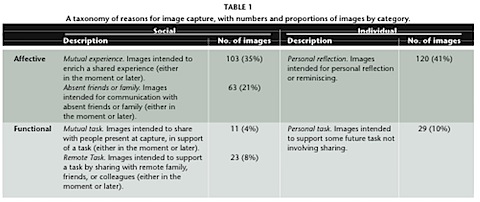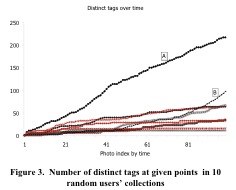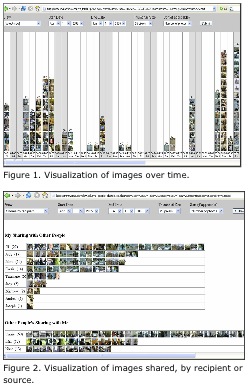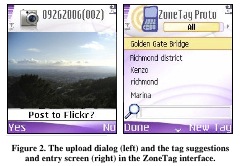J. Kustaniwitz and B. Shneiderman. Motivating annotation for personal digital photo libraries: Lowering barriers while raising incentives. Technical Report HCIL-2004-18, University of Mariland, College Park, MD, USA, 2005. [PDF]
——–
The main argument of this paper is that annotation is a tedious activity. Few users take the time to annotate carefully and sistematically their collection and therefore thousands of pictures lie unorganized in folders pretty much as printed pictures lie in shoeboxes. The author highlights how part of the problem is that users themselves do not understand what they can do differently once pictures are annotated.
Toward the end of raising motivation for tagging pictures, this paper describes several applications for visualizing collections of annotated pictures. For instance, Birthday Collage is an application that automatically pulls together pictures taken at birthdays for the same person.
The value of personal digital photo libraries grows immensely when users invest effort to annotate their photos. Frameworks for understanding annotation requirements could guide improved strategies that would motivate more users to invest the necessary effort. We propose one framework for annotation techniques along with the strengths and weaknesses of each one, and a second framework for target user groups and their motivations. Several applications are described that provide useful and information-rich representations, but which require good annotations, in the hope of providing incentives for high quality annotation. We describe how annotations make possible four novel presentations of personal photo collections: (1) Birthday Collage to show growth of a child over several years, (2) FamiliarFace to show family trees of photos, (3) Kaleidoscope to show photos of related people in an appealing tableau, and (4) TripPics to show photos from a sequential story such as a vacation trip.

